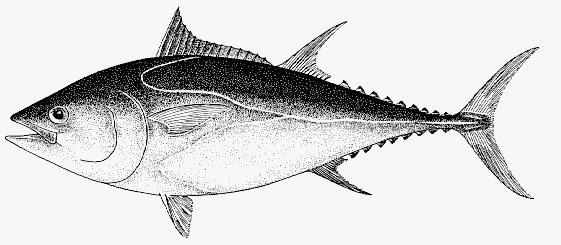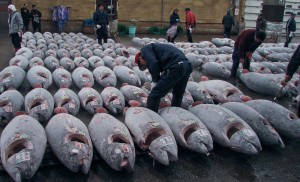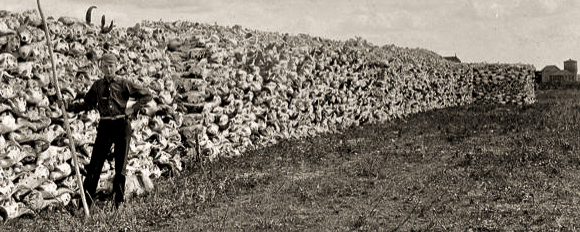There are many ways to celebrate a new year—for me, it’s by becoming a “person of LWON” and joining some of my favorite science writers at this commodious corner of the web.
For fishmongers at the massive Tsukiji market in central Tokyo, however, there’s no more festive way to ring in the New Year than with the first bluefin tuna auction of the season. That happened on Wednesday this year, with the first fish selling for an unprecedented $396,000. Some are calling the record price auspicious—surely $1000-per-kilo fish must be a sign of recovering luxury markets in Japan and China.
At 324 kilograms, this tuna was a relative welterweight—the largest Pacific bluefin can weigh 450 kilos. But the first sale of the year is considered especially lucky, and delivers a guaranteed PR boost for the winning bidders, in this case owners of upscale restaurants in Tokyo and Hong Kong. But there’s a distinct rummy whiff to this kind of luck.

New Year’s markups aside, bluefin tuna are the world’s most expensive fish not just because of their size and buttery, perfectly marbled flesh. The real premium is rarity, and the global-ranging fish—there are three species—have been hunted to the near edge of extinction. They routinely sell for more than $100,000 each simply because there aren’t many left. In economic terms, perhaps it’s only right that it should cost $20 or $50 or $100 a mouthful to eat what might as well be flesh carved from the last of the unicorns after Noah’s ark has sailed away.
It’s no news that bluefin tuna are expensive of course, nor even that year after year, governing bodies set catch limits at double or more what fisheries scientists propose as sustainable, and that actual catches double and triple that number again. We humans have always been good a killing off the large and tasty among our fellow animals, but we’ve seldom done it before with our eyes quite this wide open.
Stories about overfishing often run with iconic photos of Tsukiji, with its rows upon rows of frozen bluefin corpses lined up for pre-auction inspection. Those pictures always remind me, in the grisly efficiency they represent, of the black and white photos that fascinated me when I was little, growing up in Saskatchewan and poring over historical photographs of heaped bison bones on the local prairie.
What a waste, I always thought then, to slaughter the greatest wild herds on earth down into nothing but bone meal fertilizer. And what a waste, I think now, to let this most magnificent of oceanic fish slip away for what amounts to a fancy night on the town.

It’s not that I have anything against a nice bit of sashimi—or a nice, medium rare bison burger, for that matter. But when we value scarcity with increased price, rather than with protection and a chance to grow back—respect, in other words—we accelerate towards the brink of extinction, rather than backing away from it. If this week’s record bluefin sale really is a harbinger of things to come, I’m afraid my first post at LWON has become a rather depressing one.
It’s a shame, really. Average bluefin prices at the annual New Year’s sale had evidently been falling for the last couple of years … hardly enough to slow the global fishing frenzy, but even a modest downward trend in the economics of extinction would have been a hopeful sign. Imagine if next year prices plummeted again because no one wanted to eat up the last chance bluefin tuna have to survive—now that would be an auspicious sign indeed.
**
Image credits, from top: Pacific bluefin tuna, Thunnus orientalis, FAO via fishbase.org. Tsukiji Central Market, Wikimedia Commons user Fisherman. Bison bones, Saskatchewan Archives.